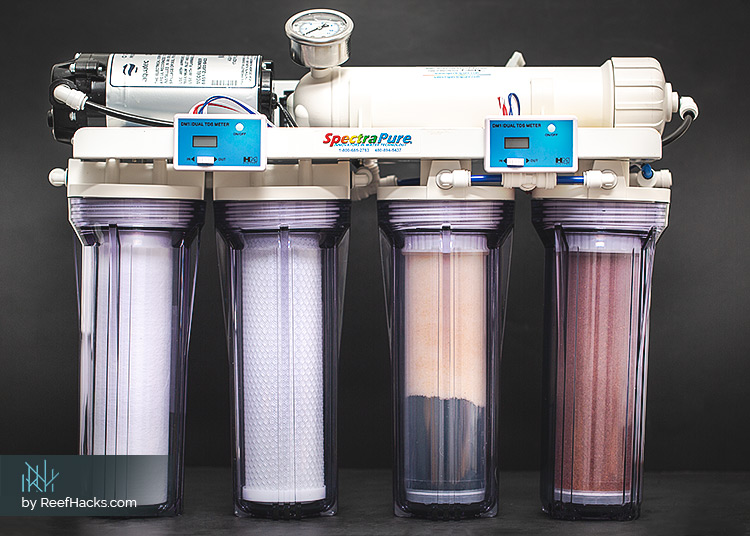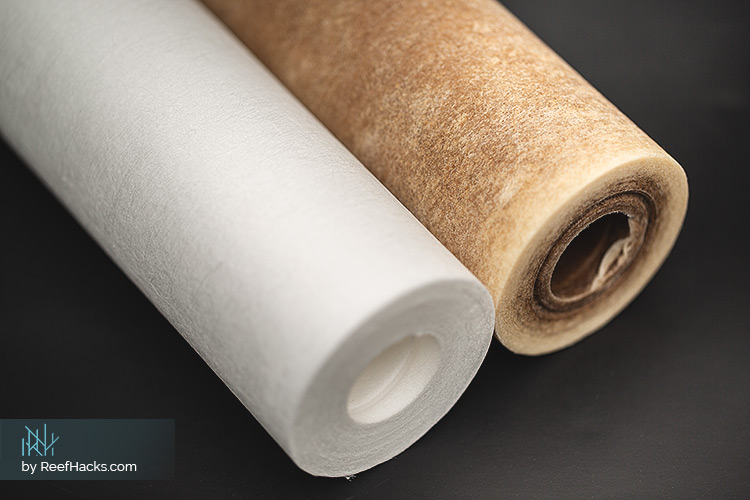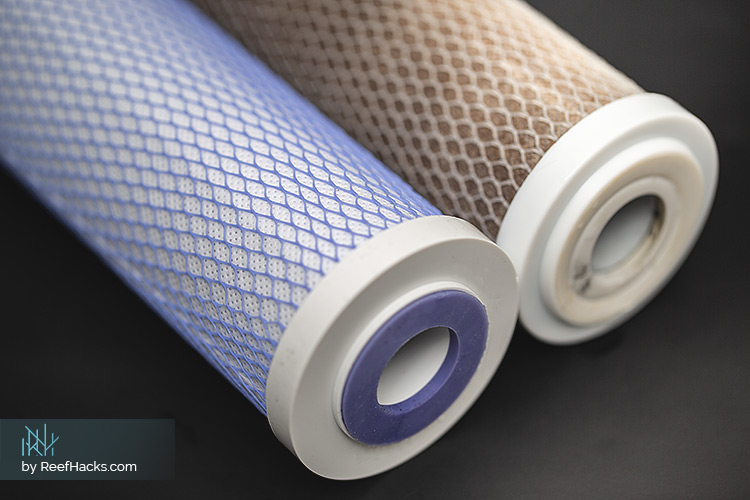Reef keeping is, in many ways, a multidisciplinary hobby. From tending to biochemical parameters needed to sustain life to mastering the art of lighting, being a reefer means being a student in the school of the sea. This hardline truth either excites or terrifies novice reefers. Thankfully, reef keeping isn’t as unforgiving as in years past.
When I first submerged myself into this hobby, the marketplace wasn’t nearly as diverse and advanced as it is today. Back then, reefers had very little in terms of high-tech equipment and complex supplement formulas. After all, this was before computers fit in your pocket.

Author:
As a lifelong aquarist, Yuliya has an endless curiosity about our underwater universe. After graduating with a bachelor’s in Environmental Engineering, she transformed her passion into a successful career. While working at the Institute of Environmental Protection in Moscow, her passion for saltwater and reef aquariums only increased. Moving to the United States in 2013, Yuliya embarked on another impactful journey by sharing her unprecedented experience for all aquarium hobbyists ... Read More.
Of course, all that changed when our world moved into the digital realm. Advancements in manufacturing and groundbreaking discoveries in our understanding of seawater composition and coral development catalyzed us into the future of reef keeping.
I’m often asked what innovation I think has changed the reefing hobby. No matter how many times this question is asked, my mind always swirls with excitement. While there’s literally dozens of devices and entire systems capable of altering the success of any reefer, my answer is fairly consistent: RO/DI water treatment systems.
Deceptively Clear - Hidden Dangers of Tap Water.
Out of all the devices and systems, why choose RO/DI systems? This is a valid question, but let me answer with a question of my own. Do you know what’s in your tap water?
If you’ve never settled into a disturbing round of tap water research, you may be shocked to uncover exactly what’s pouring out of the faucet.
Chemicals and concentrations vary based on municipality, but nearly all water systems employ a cocktail of unsavory ingredients. It’s not uncommon to find sodium silicofluoride, calcium hydroxide and aluminum sulphate in the water supply. While these compounds must remain below a specific concentrations, health advocacy groups have long proclaimed the hidden risks of tap water.
All of these chemicals and additives pose a significant threat to aquarium stability, but it’s the inclusion of chlorine that’s of particular interest.
To put it simply, chlorine is disastrous for coral health. This chemical can do some serious damage, even at low concentrations. In response to this threat, many reefers choose to add a dechlorination agent into water before adding it to the tank. Although this may be an effective solution, there’s another way.
Here’s where RO/DI systems come into play. Rather than relying on chemicals to eliminate chemicals, this solution leverages the natural phenomenon reverse osmosis. Basically, this treatment process involves pushing pressurized water through a series of filtering stages.
Each stage is designed to extract large and micron-sized particles from incoming tap water. With an advanced system, it’s possible to achieve nearly 100% pure water. For the reefer, this eliminates the threats of accidental chemical contamination or fighting to achieve precise and balanced water parameters.
Of course, not all RO/DI systems are created equally. At Reef Hacks, we believe there are many excellent systems on the current market. Unlike other industries, it’s difficult to assign the term “best” to almost any device.
When it comes to RO/DI systems, however, our recommended brand is as clear as the water it produces: SpectraPure MaxCap Performance Plus RO/DI System (Model: MMC-RODI-100-PPLUS).
So, why do we run SpectraPure for all of our tanks?
I’m glad you asked…
Innovation in its Purest Form - SpectraPure Company Review.
I’ve been a fan of SpectraPure for many years. Their dedication to forward thinking and product efficiency is a rarity among the sea of pop-up suppliers and outsourcing-based “brands.” - http://spectrapure.com
Before diving into the MaxCap Performance Plus RO/DI system, let’s take a moment and explore why SpectraPure’s held a strong presence for over three decades.
The year was 1985, and founder Charles Mitsis began what would ultimately become one of the leading water purification manufacturers in the marketplace. What feels like a lifetime ago, my reefing partner introduced me to their line of saltwater water treatment systems. And, as they say, the rest is history.
As an engineer by trade, I appreciated the skills Charles leveraged to create his many products. Holding over 13 years of experience as an inventor, chemist, engineer and scientist for the aerospace industry, Charles brings a unique background to the research and development of ultra-pure water systems.
Over the years, SpectraPure has changed the way we think about water purification. As the first company to introduce RO/DI filtration technology specifically for aquariums, every product is distilled with passion and precision. Their commitment to innovation and bettering established systems has changed the water treatment game for some of the world’s leading aquariums, zoos and science institutions.
From scientifically designed DI resin mixtures to innovative products that span into a variety of aquatic industries, such as the Peristaltic Dosing Pumps for hydroponic and other aquarium applications, SpectraPure truly is the engine driving our industry forward.
And I’m not the only one who thinks so.
With customers such as The Rain Forest Cafe in Disneyworld, Odysea Aquarium, Waikiki Aquarium, Aquarium of The Pacific, San Francisco Zoo, St. Louis Zoo, Staten Island Zoo and countless universities, it’s clear to see you aren’t dealing with just any supplier.
Personally, the hallmark of their greatness is their stellar customer service support. During my most recent order, there was a small shipping issue. Not only did Nina handle the situation with genuine compassion and eagerness to find a solution, but their entire customer support team went above-and-beyond to sort it all out. They even replied during the weekend. If that’s not dedicated support, then I don’t know what is.
While I could continue listing impressive fact after impressive fact, it all boils down to one simple truth:
The ingenuity and curiosity that fuels SpectraPure translates into finely optimized water purification systems.
So, what has all this innovation and multi-industry impact done for the reefing community? Well, to put it bluntly, it’s changing the way we think about RO/DI purification systems.
SpectraPure MaxCap Performance Plus System Review.
As I was organizing my thoughts in preparation for this review, I ran into a rare problem. I didn’t know where to begin.
Should I focus on its impressive 1:1 ultra low waste water ratio? What about its automation technologies? How much detail should I reveal about its filter maintenance and care levels? After a while, I was surrounded by a mountain of notes, but still had no idea how to convey its actual impact.
That’s when it hit me. The MaxCap Performance Plus RO/DI System doesn’t need lengthy prose to reveal its value. Instead of getting caught up in the details, I’ll let its refined engineering and cutting edge filtration process do the talking, or should I say, writing.

The Heart of Purity - Five Stage Filtration System.
Although the MaxCap Performance Plus system comes well-equipped with a variety of cool features, its five stage filter setup is its greatest benefit. Not only does this entire system eliminate up to 99% of contaminants, it's designed to last.
As water passes through each stage, or filter cartridge, it’s systematically cleansed from chemicals and particles. By the time water passes through the final stage, it’s effectively purified from harmful compounds found in tap water.
Here’s a brief overview of each filtering stage:
Stage One | MicroTek Sediment Filter.
Pressurized water is fed into the first stage filter via a 1/4” input tube. The primary purpose of the MicroTek Sediment Filter is to eliminate larger particles. There’s two purposes for this:
- Removes harmful particles that can be dangerous to your tank ecosystem.
- Prepares water to enter the second stage, carbon block filter.
MicroTek Sediment Filters come in a variety of micron ratings. Your ideal sediment filter is based on particulate matter levels from your municipal water supply. I tend to recommend a 0.5 micron filter, which is ideal for areas with high sediment levels.
Stage Two | Micron Carbon Block Prefilter.
If you aren’t familiar with activated carbon, it’s essentially nature’s vacuum. In the most simplified explanation, organics and chlorine are “captured” within the millions of tiny pores sprinkled along the surface of the carbon block.
Want to learn more about carbon filter media? Check out our Essential Guide for Carbon Media in Your Saltwater Reef Tank.
Organics and chlorine aren’t only harmful to corals and other inhabitants. One of the most common signs you’re working with a low quality RO/DI system is a constantly failing membrane filter. Membrane filters are the core of reverse osmosis.
Essentially, if the reverse osmosis membrane is compromised due to a high concentration of organics and chlorine, the entire system is doomed.
Side Note: I want to point out a difference between our system and the standard edition.
Our municipal water supply is treated with chloramines (basically chlorine and ammonia) for nearly 11 months per year. Because of this added chemical agent, which is a potent disinfectant, we needed a more robust filter.
That’s why we upgraded to the 1 Micron ChlorPlus Chloramine Removal Carbon Block Filter. Otherwise, we simply wouldn’t achieve the level of purity reef tank water requires. Be sure to upgrade as well if you need it, you can buy it here.
Tip: Replace the carbon and sediment filters every 6 months even if your output water reading is 0 TDS. For clarity, here’s a picture of a new filter and a dead filter. If your filter starts to look like the used one, it’s time to replace.


Stage Three | TFC Reverse Osmosis Membrane.
In many ways, this stage is the cornerstone of RO/DI systems. It’s within this stage the largest concentration of contaminants are removed. While every stage is important, it’s impossible to fully purify incoming water.
By using a high rejection TFC (Thin Film Composite) membrane, SpectraPure ensures an average of 98% of microorganisms, inorganic salts and organics weighing more than 100 diatoms are eliminated. Because of its design, this MaxCap Performance Plus system can achieve a 1:1 waste-to-product ratio.
Basically, it’s possible to extract an equal amount of waste material and usable water. If you’ve never used an RO/DI system before, this ratio may seem arbitrary. But when it comes to operational efficiency and water production, it’s an incredible benefit.
Stage Four & Five | Mega MaxCap DI and Enduro DI Cartridges.
The final two stages may require two distinct cartridges, but I’ve listed them together as their purpose is relatively the same. In short, each cartridge is the DI of the RO/DI abbreviation.
DI, which stands for deionization, penetrates into the atomic level of water molecules. Through a series of biochemical reactions, ions are manipulated by either adding or removing specific units.
Without getting into the scientific explanation (read this if you’re interested in the chemistry of deionization), this process reacts with the molecular profile of specific compounds. As water passes through these DI cartridges, contaminants are literally extracted at the atomic level.
Any remaining phosphates, nitrates, silicates and other harmful compounds are filtered away. While the science behind DI filters is relatively widespread throughout the industry, few accomplish the precision and continuity as SpectraPure products.

Supporting Sparkling Pure Water - Noteworthy Features.
One of the leading factors behind our continued use of SpectraPure products is a combination of product variety and innovative features. Regardless of your needs or budget, SpectraPure has a system designed to meet your requirements. For example, before upgrading to this unit, we used the MaxCap 2:1 Manual Flush 90 GPD RO/DI system for several years and we love it!
Why did we upgrade?
Well, not taking into account the growing needs of our tanks, we chose to stick with SpectraPure because our previous system was amazing. As simple as that sounds, every component worked exactly as it should. When the time came to make a decision, there really was no question.
Here’s a brief rundown of my favorite features and capabilities:
- Surprisingly Long Filter Life - SpectraPure upgraded their filter design from its predecessor. Basically, this means greater lifespan for each filter, which translates into less maintenance and expense.
- Automatic Pure Water Membrane Flush - In previous models, you had to manually flush/clean the RO membrane, but not anymore. The automated flush system systematically rinses/flushes the membrane to extend its lifespan, prevent TDS from seeping back into the water and prolonging DI cartridge operation.

- Automated Operation - Powered by the Dual Electric Float Switches, this microprocessor controlled system automates a variety of tasks, such as filling atmospheric storage containers of any size.
- Enhanced Water Pump - Personally, this is one of my favorite upgrades as it opens the benefits of RO/DI systems for reefers who have low water pressure. The Integral Booster Pump can operate with as little as 20psi.
- Accurate Readouts - Designed to communicate as clearly as the water it releases, this MaxCap Performance Plus RO/DI system offers exceptionally accurate TDS Metering via two Dual-Probe Inline Digital Readouts, which monitors and displays water purity levels throughout the purification process to ensure 100% TDS removal. The Liquid Filled Pressure Gauge maintains membrane integrity by monitoring its feed pressure and notifying you of pre-filter cartridge statuses.

Tip: When the installed TDS meters are very accurate, I like using a separate TDS meter, just as an additional level of accuracy.
Purity Personified - SpectraPure MaxCap Final Thoughts.
There’s still so much to say about the MaxCap Performance Plus RO/DI System. From its straightforward maintenance to its ability to produce drinking water via a 3-way valve that we’ve installed right after the membrane stage, SpectraPure has developed one of the most ingenious water treatment options for reefers .
Ultimately, this RO/DI system is ideal for both new and experienced reefers. Its streamlined operation and shockingly efficient functionality offers quality water without the stress and frustration of countless other systems.
What’s your experience with RO/DI systems? Be sure to visit our Facebook page and share your thoughts, questions or comments. As always, the entire Reef Hacks team is here to help you along the salty quest for water purity.
Happy Reefing!
by Yuliya Ivanova for ReefHacks.






